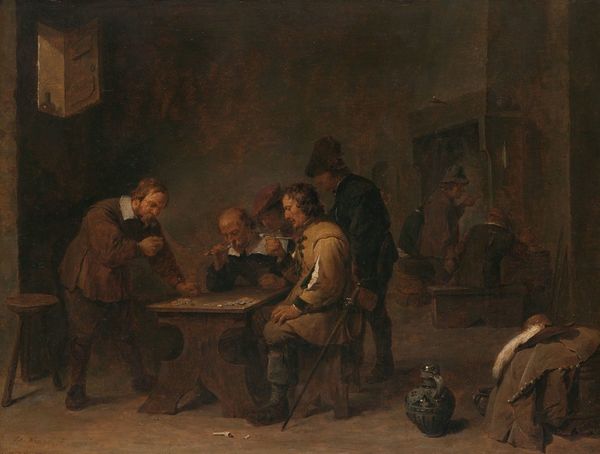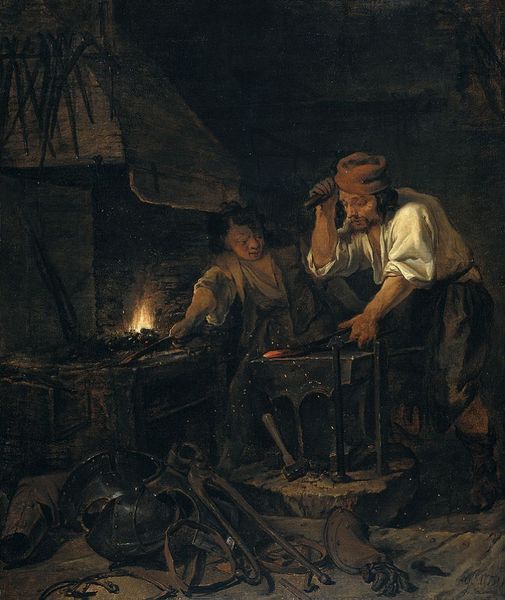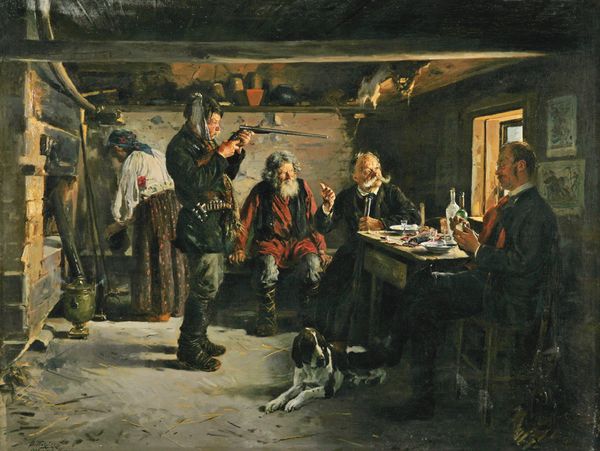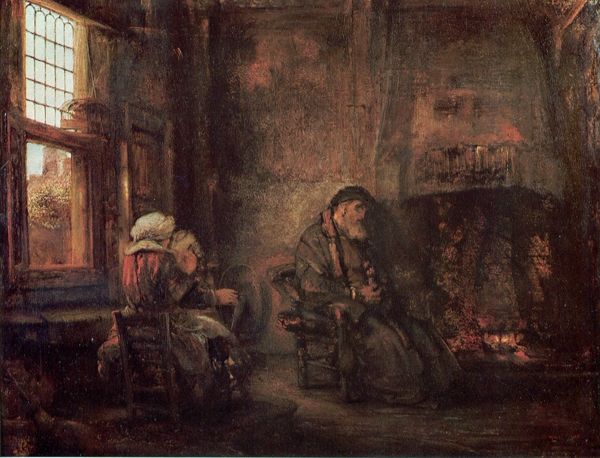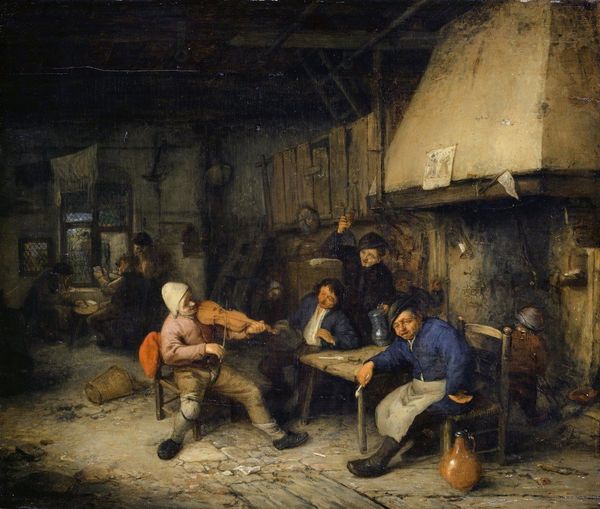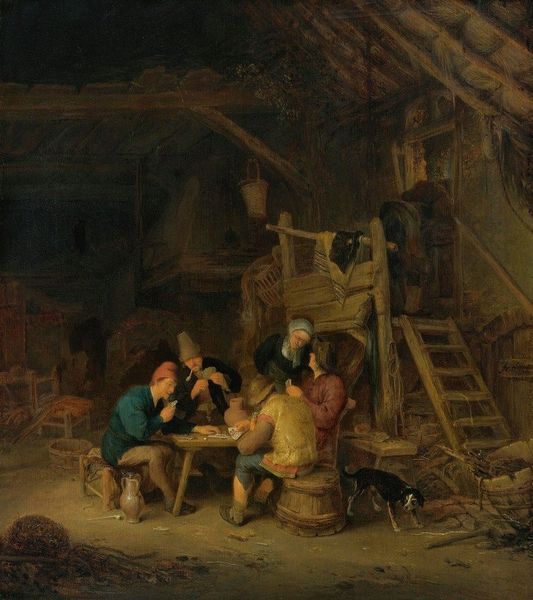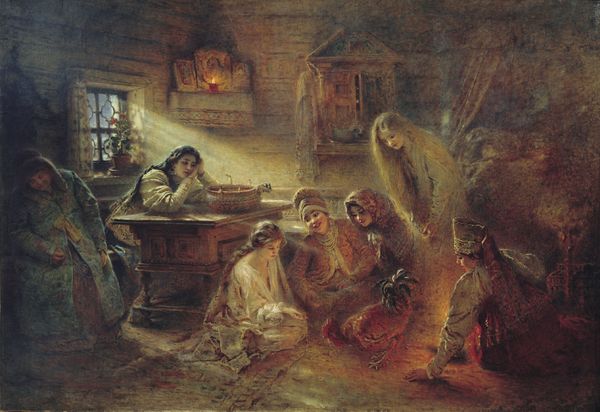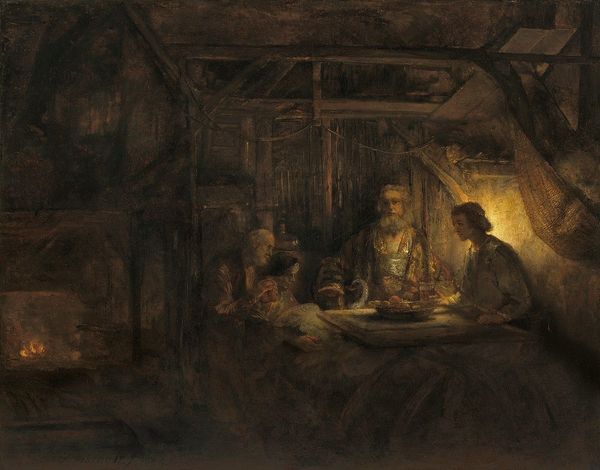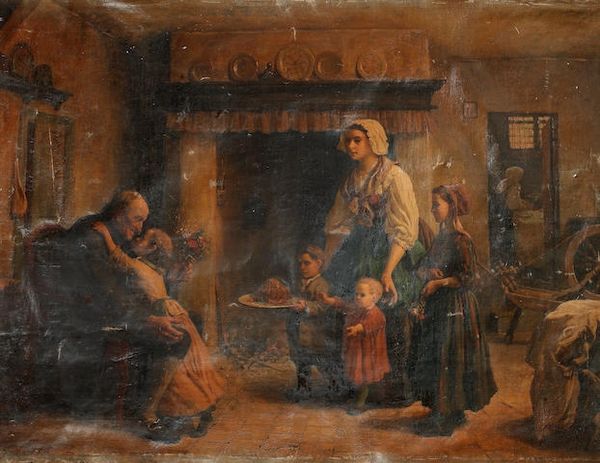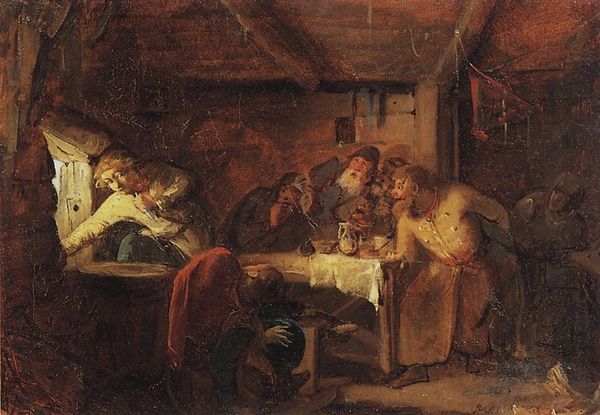
oil-paint, impasto
#
portrait
#
dutch-golden-age
#
oil-paint
#
oil painting
#
impasto
#
genre-painting
#
realism
Copyright: Public Domain: Artvee
Jozef Israëls captured this dimly lit scene of working-class life with oil on canvas. The painting reflects the social realism movement, which sought to depict everyday life, particularly that of the working class, with authenticity. Painted in the Netherlands, likely in the mid-to-late 19th century, the artwork resonates with the growing social consciousness of the time. Consider the cultural context: industrialization was reshaping society, leading to increased awareness of class disparities. Israëls, deeply concerned with the plight of the poor, uses the play of light and shadow to create a sense of intimacy and empathy. The woman’s labor contrasts with the men’s rest, perhaps hinting at traditional gender roles within the household. Note the somber tones and unadorned setting, a far cry from the lavish interiors often depicted in art of the elite. By studying the art criticism of the time, alongside social histories, we gain a better understanding of the artist's intentions and the painting’s role in shaping public perceptions of the working class.
Comments
No comments
Be the first to comment and join the conversation on the ultimate creative platform.
